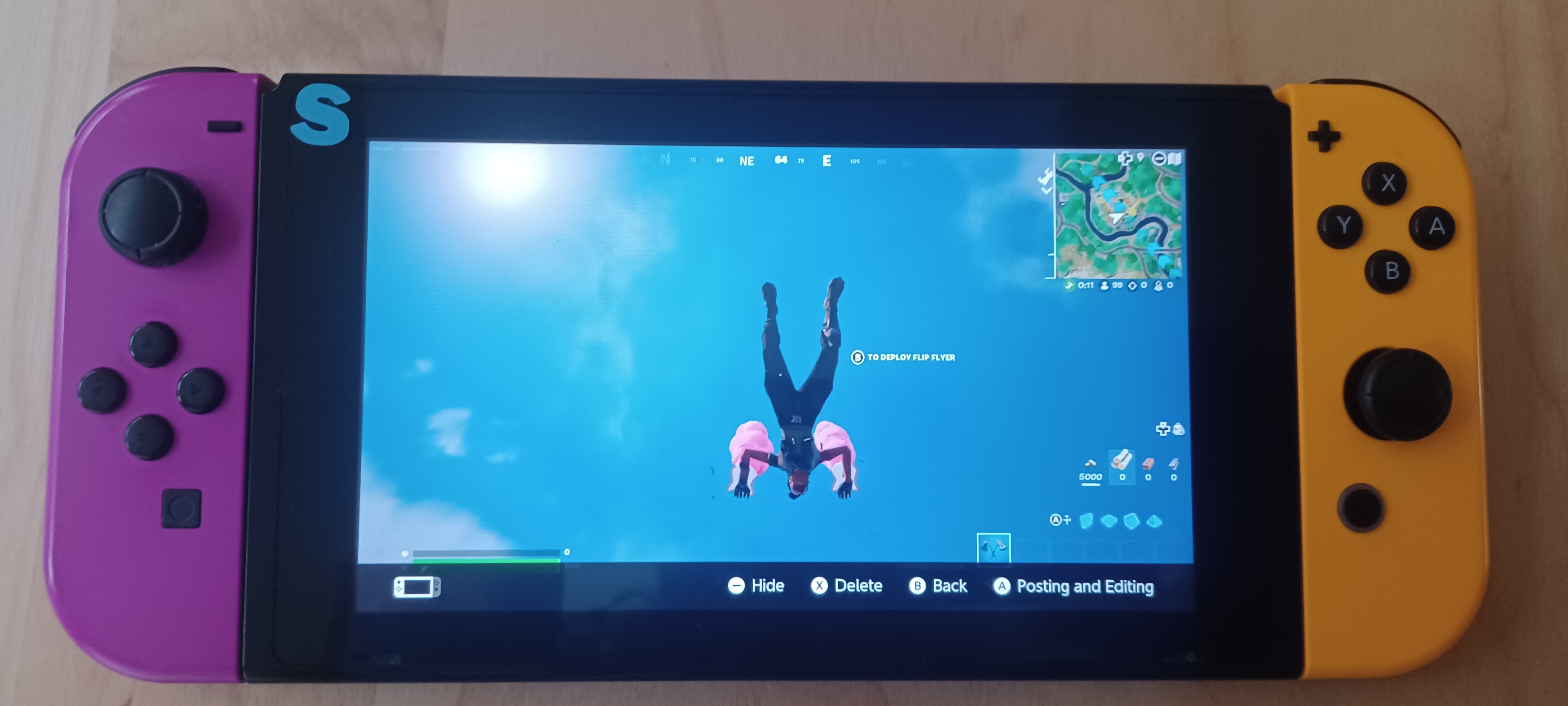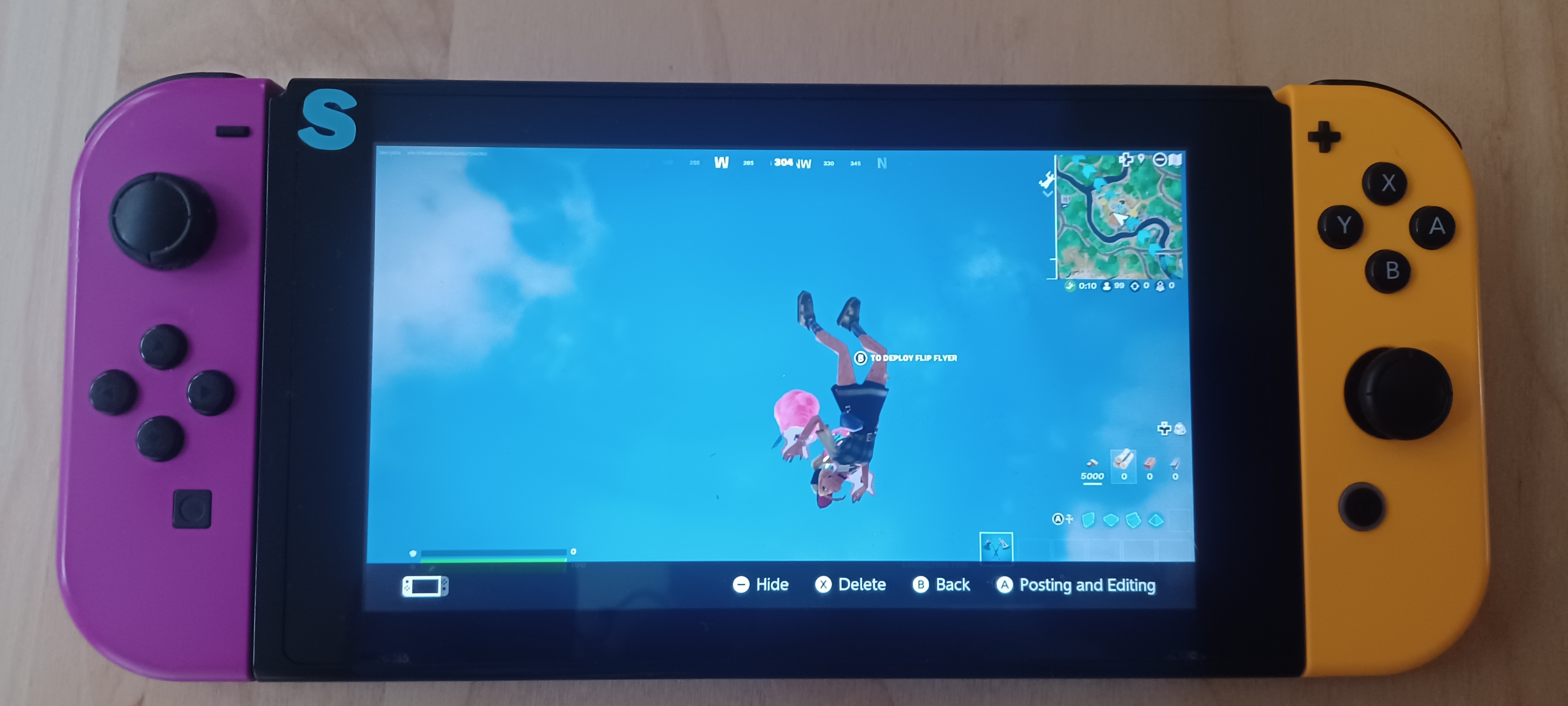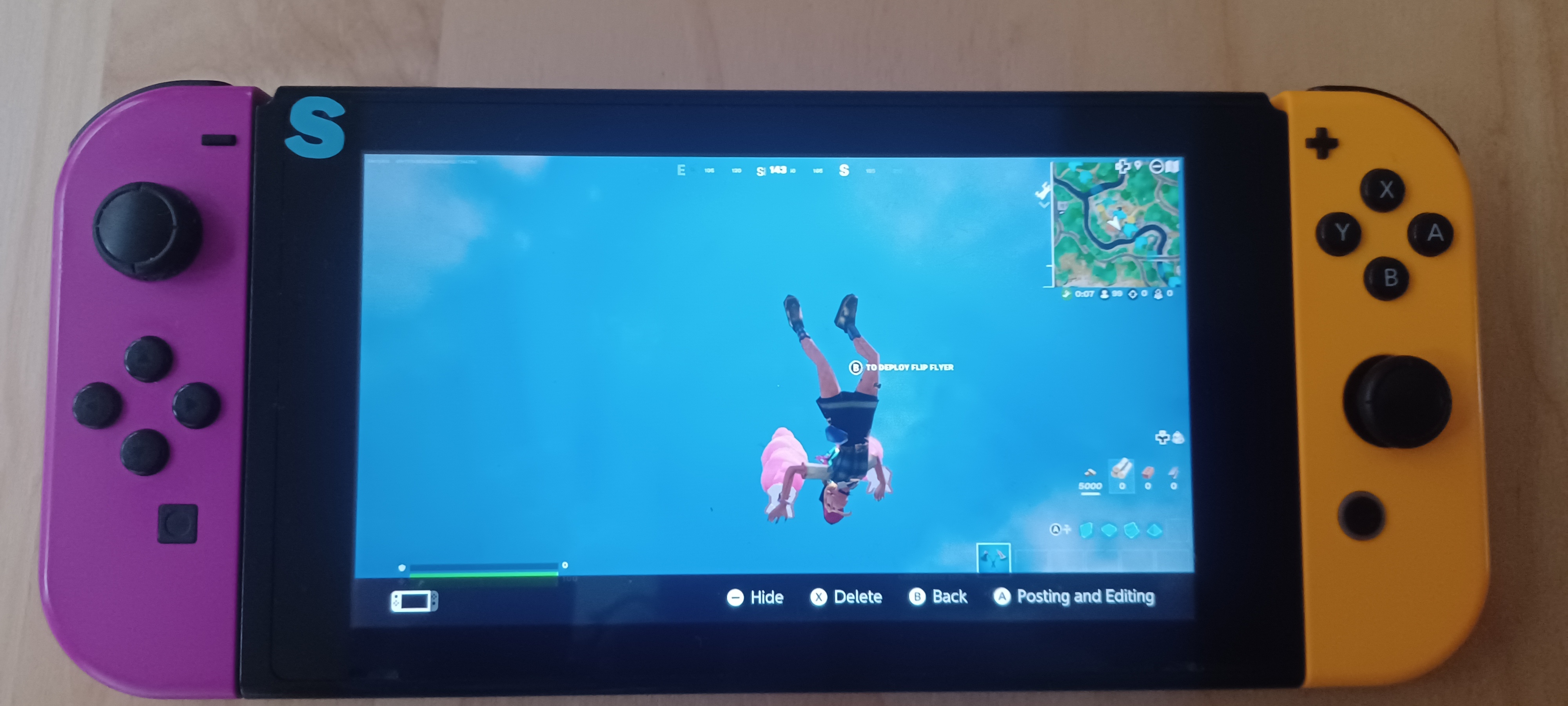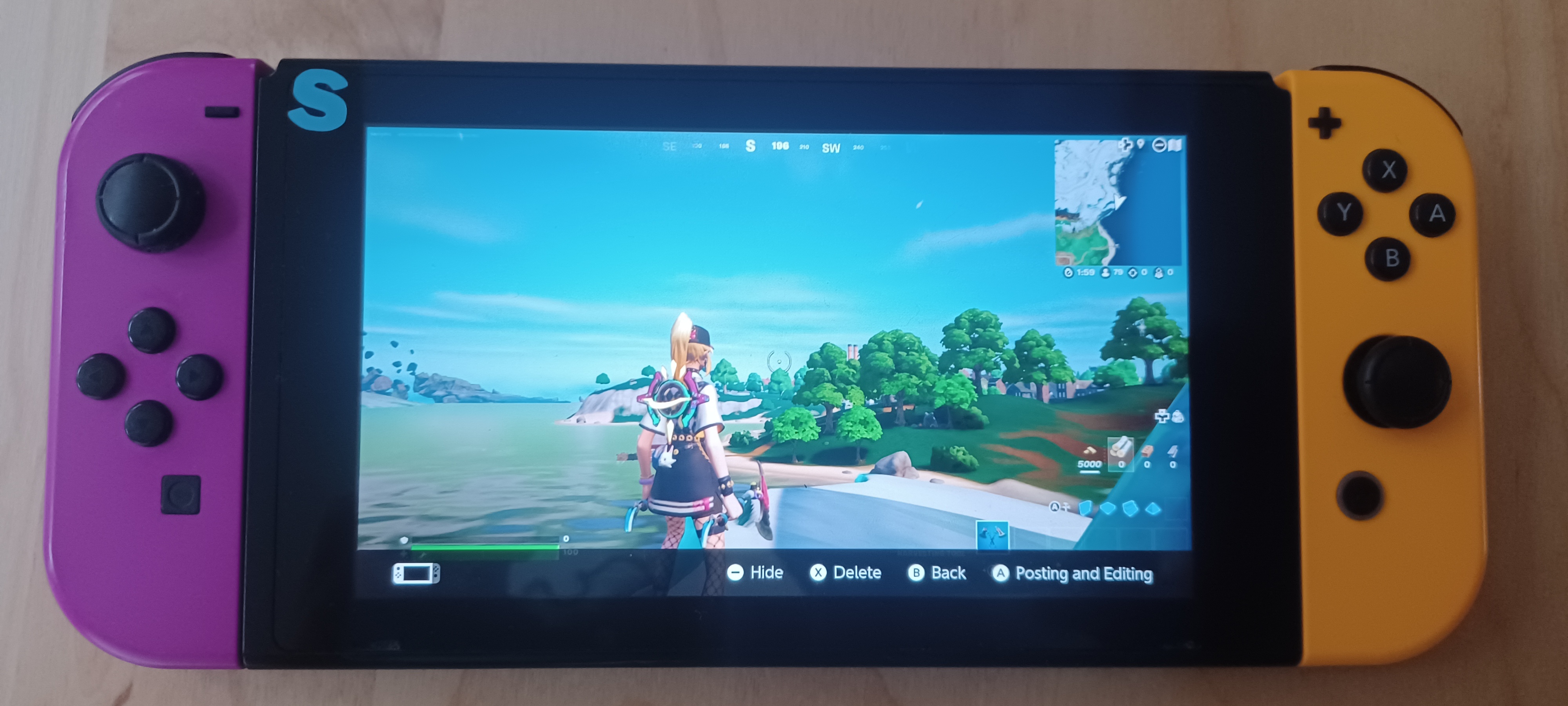:::::{#historyoftarot .has-images}
An hypothesised and randomly factual History of Tarot Cards
What follows is the story of a deck of cards and of all the more-or-less believable claims that were made about its origin. This brief history was complied following sources that attempted accurate historic recalling instead of the most commonly shared semiotic, occultist story. However, despite all efforts all the found sources told a convoluted story due to the misinterpretation of age, sources and authorship common in any ancient text on magic and mysticism (Dummett, 1993). As such, the following text will recall the disproven stories that were told about the origin of Tarot, some factual sourced material and a modern description of its usage.
When we talk about Tarot cards we are talking about a deck of playing cards composed of ten numeral cards and four court cards(Jack, Knight, Queen and King) for each of the suits, Swords, Batons, Cups and Coins. Alongside these more common cards Tarot includes 22 ‘trump’ cards with allegorical illustrations. The trumps form a sequence, usually numbered from 1 to 21, with the single card of the Fool being separated (Decker, Depaulis & Dummett, 1996).
This specific deck of cards’ history begins at the bottom of a well in Norther Italy, in the 1440s, where we place its first appearance in history. From there we can easily find links to the common usage of these cards in Norther Italy, from Milano to Bologna e Ferrara (Steele, 1900). These cards, initially called Trionfi and then Tarocchi are thought to have been intended to be used for card games, regardless of their occasional usage in future-telling (Dummet, 1993). This finding helps us trace a factual beginning of Tarot but leaves an open question to how these cards gained their place as the primary tool used in modern occultism and mysticism for cartomancy.
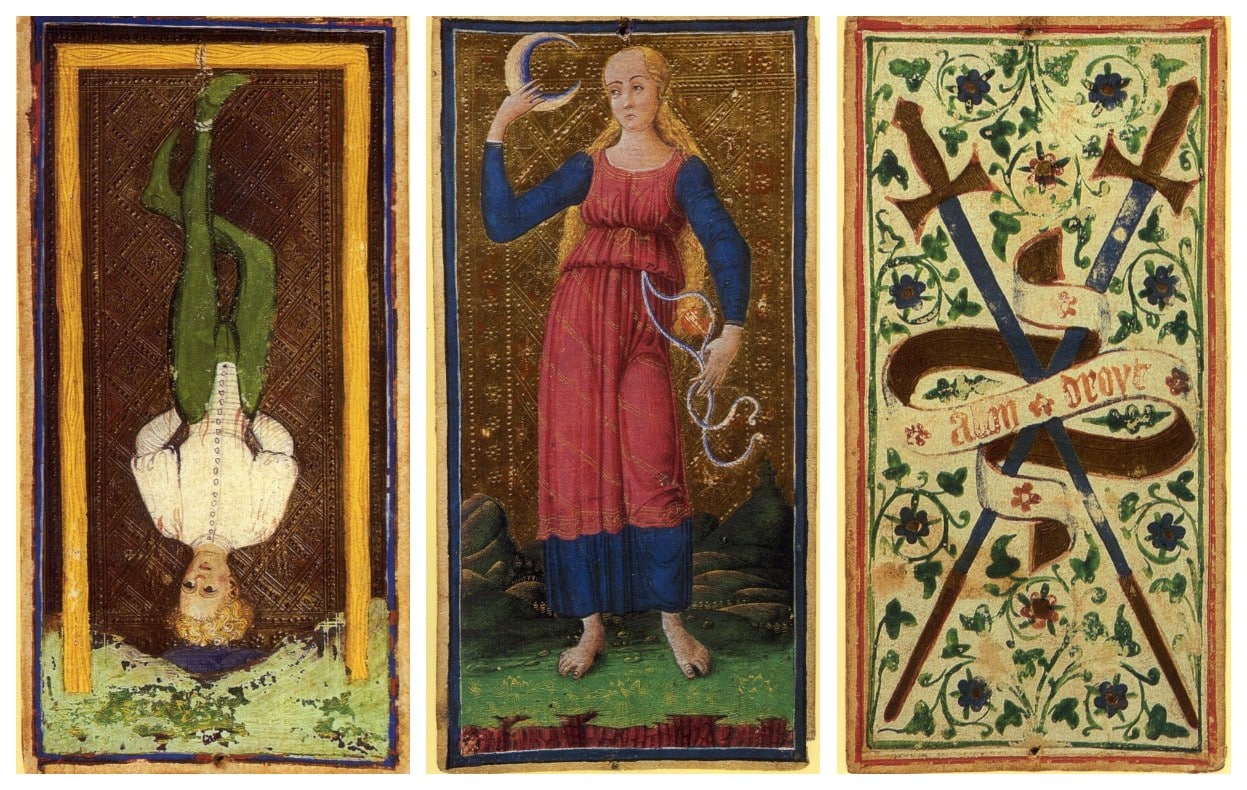
While this is where the story began to intricate itself, it can still be seen that the first wide spread future-telling uses appeared in France in the 18th century.
At this point the history of tarot beings to be influenced by what each fortune teller imagined the history of the cards to be. To fully disclose this I will first attempt to estimate the most notable occultists that used the cards and wrote historical notations about their deviance and then the stories they told about them.
The first encounter we have between Tarot and magical theory and practice happens in the Monde primitif, an incredibly long essay about Tarot cards written in 1781 by Antoine Court de Gébelin. With this text, the pastor began what would be the endless repository of arcane esoteric wisdom within Tarot that will follow the cards for generations (Chisholm, 1911). In this text, Gébeling attributed the cards’ origin to ancient Egypt, a theory that is to this day shared as truthful. This belief was based on an erroneous link to “The Book of Thoth”, an ancient Egyptian text about magic that is believed to have been spread through Europe by Romani people. This belief was then substantiated by a similar essay by the by the comte de Mellet(Decker, ). Promptly, a Parisian fortune teller named Jean-Baptiste Alliette, professionally known as Etteilla, having found these theories, adapted the esoteric view of the cards to his own uses. He switching his own practice from traditional French piquet cartomancy to the use of a self-made Tarot card deck. This deck was based on the previously shared Hermetic ideologies and was named “The Book of Toth”(same).
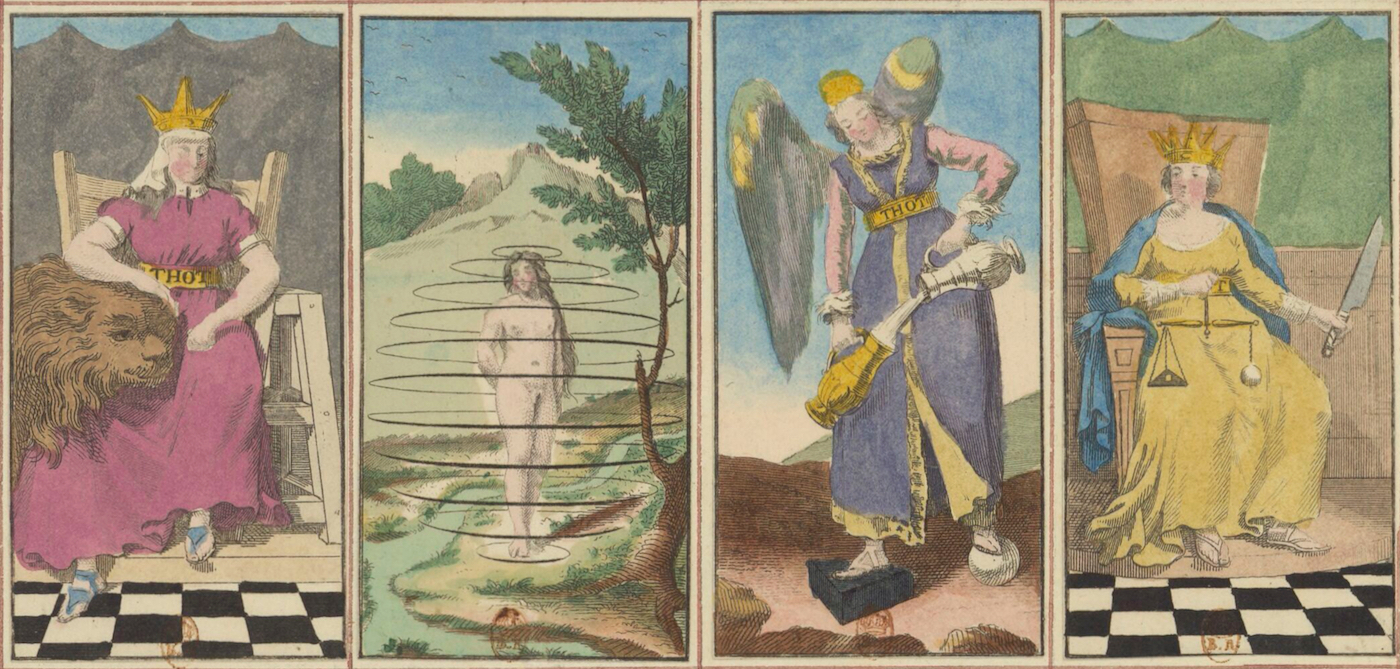
The next fundamental spin that was given to the cards’ background was down by Éliphas Levi, another French esotericist. Levi repudiated Etteilla’s theory and integrated a version of the cards that was closer to the original to his own Cabalistic magical system. However historically mistaken was Levi’s understanding of the cards’ travel from Egypt to Judea into Jewish tradition, it nonetheless revolutionised the cards in ways that live on till today. His Cabalistic theory about signs being letter, letters being absolute ideas and absolute ideas being numbers can be seen in even modern iterations of tarot.
From here on over, Tarot’s journey speeds up as the cards leave France and become absorbed into new esoteric movements like Swedenborgianism, Mesmerism and spiritualism (Decker, Depaulis & Dummet, 1996).
Before we make a jump through time to the next biggest relevant development of Tarot, I will share the last of the three false widespread theories about the origin of Tarot, the first two being Egypt and Judaism(despite its influence in modern tarot).
This last theory is harder to trace back to one esoteric influence, but nonetheless claims a Chinese origin to the cards. Most likely, this is due to the similarity with the I Ching, a divination manual from around 1000 BC. The manual was grounded in cleromancy, the production of random numbers to predict divine intention. However, there is no traceable connection between Chinese cleromancy and Tarot divination. Modern analyses of Chinese Tarot divination draw direct correlation between Western occultism and Tarot divination, leaving little room to imagine any direct causation starting from China (Fu, Li, Lee, 2002).
For the purpose of this recalling but unsurprisingly for those familiar, the next big step will bring us to the late19th century in Britain, in the Hermetic Order of the Golden Dawn. The Golden Dawn was a secret society devoted to occult Hermetic Kabbalah and one of the largest single influences on Western occultism as a whole (Jenkins, 2000). While the society itself had a wide curriculum, including astrology, alchemy and geomancy(soil divination), our only concern at the moment is with their links to Tarot cards.
In 1909, two mystics and members of the Golden Dawn, A.E. Waite and Pamela Colman Smith published with the Rider Company a deck of re-made Tarot cards based on the society’s magic system. These cards, later known as the Ride-Waite Tarot(Dean, 2015). This deck was based on the Sola Busca deck, with symbolism being taken from Levi’s descriptions and Egyptian and Christian symbolism. This deck has become the paradigm and touchstone through which modern occultists think of Tarot. Between the distribution of this deck and the use of the cards in the Golden Dawn, it became axiomatic among followers many traditions of mysticism that the Tarot is an essential component of any occult science.
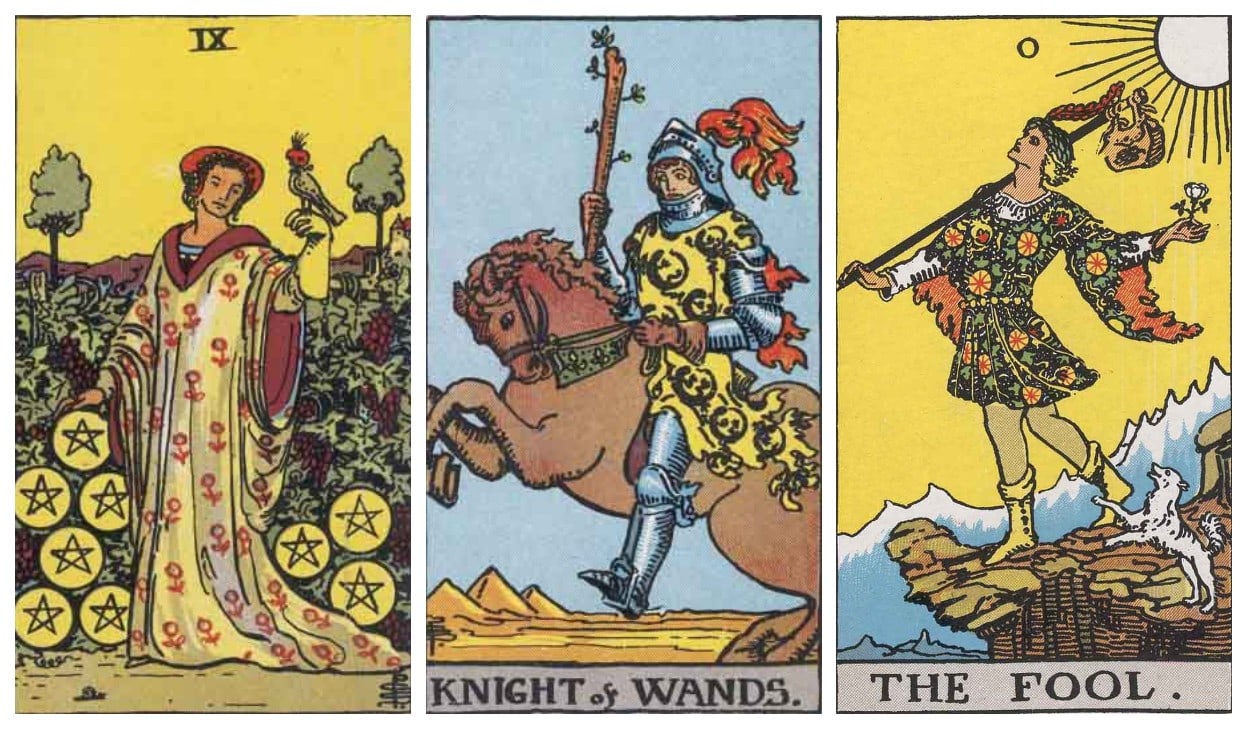
Nowadays, Tarot is emblematic and incredibly wide spread as the most common future-telling method and device. Thousands and thousands of different formats exist, often falling under the category of Oracle cards and as such not having the clear formatting rules of Tarot but still implicating divination and self-reflection through the interpretation of allegorical illustration.
Super(de)construction, a text-adventure game
My text-adventure game was (first and foremost a struggle and) an attempt to dive a little bit into the world of python and deal peacefully with the potential trauma of coding. The first unsuccessful try started by making a map on paper with all the possible rooms, corridors, spaces and the potential inputs of the player. It was proved to be a too ambitious plan though. So this was the time when the super(de)construction game was born! My intention was to make a fan fiction text adventure game(!) of the marxist superstructure theory. There are three basic rooms where the player can navigate : the Base-ment, the Apparatus and the Megaroom. People can grab specific “objects” from each room and check their inventory (for example you can have unpaidlabour, church, mostlywhitemen from base-ment, apparatus and megaroom respectively in the same bag!). The aim of the game is to accumulate enough points in order to bring eventually the revolution and win. The fermentation and the radicalization happen only in the base-ment. Will you be part of the revolutionary class?
:::::
Colophon
Photography and Illustration
Unless otherwise stated, all photography and illustrations in this publication are created by the same authors as the text. That which is below is like that which is above and that which is above is like that which is below, to do the miracle of one only thing.
Digital Tools
This book was created with the help of a collection of not-so-small and extremely sharp open source tools, to name a few; paged.js, pandoc, pdfimpose, pdftk, and our darling demon inkscape. So was the world created. From this are and do come admirable adaptations where of the means is here in this.
###Printing and Binding Just lil old us.
Fonts
Work Sans by Wei Huang. Consolation by us.
That which I have said of the operation of the Sun is accomplished and ended.
:::::
rituals_archive will go here
Introduction
The last trimester was an attempt to understand the notions of games and rituals. Instead of introduction we will try to unravel this mysterious journey as well as keep questioning and collaging.
We mapped the common characteristics and the differences between the latter in relation to ideology and counter-hegemony. We practiced, performed, annotated rituals that were connected (or not) with our cultural backgrounds while we questioned the magic circle. We dived into the worlds of text adventure games and clicking games while drinking coffee and talked about class, base, superstructure, (counter)hegemony, ideology, materialism. We discussed about how games and rituals can function as reproductive technologies of the culture industries. We annotated games- focusing on the role of ideology and social reproduction. We reinterpreted bits of the world and created stories with it (modding, fiction, narrative) while focusing on community, interaction, relationships, grief and healing.
The eventual product of this process is a console, a magical object, a wooden container, a promising healing. How the unpacking of notions of games, rituals, ideology, superstructure in relation to the witch-hunting can become the midwiferies of a healing box? How practices of heal and care can work as counter-hegemonic acts that can cure and liberate our souls and bodies from patriarchical and capitalistic fetters?
We didn’t manage to provide you with comprehensive and solid answers or conclusive statements. The truth is that this wasn’t our plan. Our intention was to create openings for debate or even conflict, to map a territory, to invite those who would like to join us.
“What if you are playing tetris and the tetris gods give you something apart from the usual seven tetrominoes, like an unexpected pregnancy or the end of capitalism?”,(Steven)
Starting with rituals we can claim that they can be understood as instruments in the struggle for the exercise of power. Organized by repetition, they (re)connect the individual to the collective, creating a vision towards a given perception of society. Participation in this creative act is determined by several factors, for example, a ritual’s function, its relationship to hegemonic power, a collective’s politics and objectives, etc.
*“Ritual is a means of performing the way things ought to be in conscious tension to the way things are in such a way that this ritualized perfection is recollected in the ordinary, uncontrolled, course of things. Ritual relies for its power on the fact that it is concerned with quite ordinary activities, that what it describes and displays is, in principle, possible for every occurrence of these acts. But it relies, as well, for its power on the fact that, in actuality, such possibilities cannot be realized.(Smith,1980)*”
“Ideology talks of actions: I shall talk of actions inserted into practices. And I shall point out that these practices are governed by rituals in which these practices are inscribed, within the material existence of an ideological apparatus(...)Ideas have disappeared as such to the precise extend that it has emerged that their existence is inscribed in the actions of practices governed by rituals defined in the last instance by an ideological apparatus”,(Althusser,1970)
Similarly, videogames create worlds. Often, those worlds mirror our own, reproducing certain ideals and values as norms through their narrative, game play, design. This trimester we explored world-building characteristics found both in rituals and videogames. We critically considered those worlds, identifying the key points and elements through which specific videogames and rituals circulate political, cultural and social values. While this world-building might be interpreted from an angle of implicit and explicit bias rooted in hegemonic values, we investigated the generative, creative possibilities of such characteristics.
“The main task of mass culture is to create, reproduce, and manage particular kinds of subjects — workers, consumers, individuals, citizens —required for current conditions. To perpetuate their own existence, mass media must succeed at representing the violent coercion of capitalist systems as natural laws: Of course you have to pay rent to live inside; of course you have to buy food to eat; of course you have to work if you want to survive. The production of a fungible, disposable and migratory working class requires the alienation and atomization of communities into individuals, which involves destroying the village, kinship structures, indigeneity, and many other previous forms of meaning-producing structures, leaving a gap which ideology must fill. While the fundamental structures of domination — racism, patriarchy, heterosexuality, etc. — form the bedrock of this ideological apparatus, the complexity of the always expanding and changing capitalist system requires an equally flexible set of subsidiary tools capable of rapidly adjusting ideology en masse. In general, media emerge not to meet the demands or desires of individual users but to accommodate what the predominant mode of production requires.”,(Osterweil,2018)
Our intention was to look into rituals and their overlap with video games as a way to explore "forbidden" or otherwise lost knowledge erased by oppressive systems (e.g. witch hunts). Understanding games and rituals as gateways to alternative ways of relating to Nature, each other and (re)production of life, labour, etc, we played together by writing fan fiction and spells, developing rituals, analysing and creating games together.
“Sims as just social reproduction: some values are certainly given by the game (make money to buy nicer things, progress in your career by doing tasks that improve your skill, charisma is a skill but not kindness) , but also ideology is put into the game by the player. The player chooses what to reproduce and often share in the "gallery" or on social media. Community being so important in this game then means that the crux of the social reproduction is happening when the choices you have made in the game are broadcasted. Did you create a heteronormative white thin nuclear family that made a lot of money? or did you choose to play differently?“,(Ada)
“The Communist Party of Second Life (CPSL) aims to be a Marxist, internationalist and revolutionary organization for all communists in Second Life. The CPSL aims to spread understanding of Marxism among SL citizens, to organise support in SL for the class struggle in RL, including all struggles of the working class against imperialism and the bourgeoisie, its state and wars.”,(Lydia)
“The act of the modder’s appropriation of the pre-existing game is also similar to Michel de Certeau’s cultural ‘poaching’.De Certeau’s everyday bricolors make do with remixing the privatized spaces and products of consumer society that they find themselves inhabiting and using. Rather than being passive consumers, ordinary people invent varied subversive tactics for stealing back the given of everyday life. De Certeau writes, ‘Everyday life invents itself by poaching in countless ways on the property of others’.”(Schleiner,2017)
Meanwhile, we went through the witch as a magical practicioner, as a resisting body, a border figure. “Federici presents the witch”as the embodiment of a world of female subjects that capitalism had to destroy: the heretic, the healer, the disobedient wife, the woman who dared to live alone, the obeha woman who poisoned the master’s food and inspired the slaves to revolt.” Behind the witch hunt, she uncovers a joint effort by the Church and the state to establish mechanisms of gendered control of bodies that immanently resisted newly instituted regimes of productive and reproductive work”(Timofeeva,2019).
“Sorcerers have always held the anomalous position, at the edge of the fields or woods. They haunt the fringes. They are at the borderline of the village, or between villages. But sorcerers not only exist at the border: as anomalous beings, they are the border itself. In other words, the borderline passes through their bodies.”,(Deleuze, Guattari,1980)
How the understanding of the witchs’ hunting that happened a few centuries ago in relation with the figure of the witch as marginal, rebellion entity can shed light on the contemporary witch-hunting. How this knowledge can provide us with tools of empowerment, emancipation, resistance and make us reimagine counter-hegemonic practices of collective care and healing?
Console is an oracle; an emotional first aid kit that helps you help yourself.
Console invites you to: open the box and discover ways of healing;
Console provides shelter for your dreams, memories and worries.
Face the past and encounter your fortune.
Console gives you a new vantage point; a set of rituals and practices that help you cope and care(of yourself and of the others)
Console asks everyday questions that give magical answers.
Console invites you to self reflect, explore your subconscious, spin the wheel of fortune (and pick a card), explore what is possible beyond what is obvious, guide you into... [the future and past], creates stories …
:::::
They who dream of drinking wine may weep when morning comes; they who dream of weeping may in the morning go off to hunt. While they are dreaming they do not know it is a dream, and in their dream they may even try to interpret a dream. Only after they wake do they know it was a dream. And someday there will be a great awakening when we know that this is all a great dream.
And when I say you are dreaming, I am dreaming, too.
Zhuàngzi 莊子
✧ Preface
Have you ever woken up feeling like there is a word, at the tip of your tongue, in a language you don’t quite understand?
It’s the same feeling you may have felt when a dream has left too quickly once you woke up, like a regretful lover. You grasped and reached but it was gone and you have forgotten something so fundamentally important that your stomach has caved into itself.
This deck of oracle cards invites you to go back into that cave, that pit, to the start of that word. Tarot and oracle cards are always tools for self-exploration, but the Oracolotto will guide you to explore deeper, into the subconscious realm of your dreams.
Oracolotto includes twenty-one cards and one guidebook. The cards follow the paved journey of Tarot’s major arcana, but do not be fooled by the numbers, as they will not give you insight into the path. You do not need any previous knowledge to use these cards, only the ability to dream and a soul, yours or other.
The Oracolotto cards present illustrations of collective dream archetypes, as delineated by Neapolitan tradition. While the cards symbolically follow the traditional Tarot journey from the fool to the world(minus the Emperor), they are based on the Neapolitan art form of the Smorfia, intended not as the grimace but the dream interpretation method.
The Smorfia is an ancient art form in which symbols and archetypes from a person’s dreams are analysed and converted into numbers. To use the Smorfia, one would thus recall every event, person and object that appeared in their dream, and then use the extensive list of dream archetypes to find the associated numbers. This may be used to find out the meaning of your dreams or, most commonly, to find numbers to play the lottery (Ricciardone, 1987; Zezza, 1835).
In this case however, the archetypes were used as a story telling device, an exploration tool for imagination and self-discovery. You may chose to use these cards in the two ways I have imagined, or create your own.
- The first, and the one I recommend, asks your soul to sit with the cards, ask them a question, read the answer in the following pages and find a language for new or old feelings.
- The other way I have imagined requires you to keep the deck next to your bed, or wherever you sleep. Once you wake up, while the dream is still supple and alive, reach for the Oracolotto and try and find the cards that resemble the dream most closely. This way you may give a language to the unformed and find on the cards apparent truths.
There is a possibility, that you have read thus far because you wish to remember your dreams and connect to your subconscious, but feel like you cannot. You may almost never recall your dreams or think that they are random. If this is your case, I recommend that you use the Oracolotto in the first way I have described, as the subconscious seeps into our daily thoughts and feelings anyways. The deck may help you find these patterns.
You may also choose your own path, disregard what I said and make your own game, read old or future dreams or even play the lottery. The tools are now in your hands.
:::::
Documentation of Games and Rituals, Kick off sessions
We are looking at rituals and their overlap with video games as a way to explore “forbidden” or otherwise lost knowledge erased by oppressive systems.
On Rituals and Traditions What is a ritual? And tradition? What makes a ritual “ritual” and how does it differ from the traditions? Or are the two the same thing? What do rituals and traditions mean through the lens of culture, location and time? These and other questions we asked ourselves and one another during the first few collaborative sessions of this Special Issue. For hours, we kept talking and reading about the commonalities and differences between the two. There’s a lot to explore! We went down memory lane and shared a lot of memories, childhood recollections, and personal stories. Perhaps, dear reader, you have your thoughts on this too?
But let’s enter a parallel universe!
On Game and Play What is a game? And play? What makes a game “game” and how does it differ from the play? Or are the two the same thing? What makes a game? It is the rules, the limitations, or perhaps the wins and losses. Do you really need to win in order to play? Or were you being played? To try to answer some of these questions we read and annotate collectively the chapter “Defining Games” of the book ‘Rules of Play - Game Design Fundamentals’ by Katie Salen and Eric Zimmerman. What we discovered was that games and rituals alike are the gateways to alternative ways of relating to Nature, each other and (re)production of life.
We played together by writing fanfiction and spells, developing rituals, and analysing and creating games together. What emerged as a tangible result from all these discussions is this experimental publication you are holding in your hands right now. We named it Console.
Transition to the weekly rituals: Another thing that came out of our first two sessions was the ONE SENTENCE RITUAL. Each week for 6 weeks in a row, we wrote down a ritual of our own and took turns in performing the ritual from the list. Coffee fortune-telling, Hard drive purifications, Collective eating, Sound meditations, and Talking to Worry dolls, made us reflect on the content of the week and on our lives also.
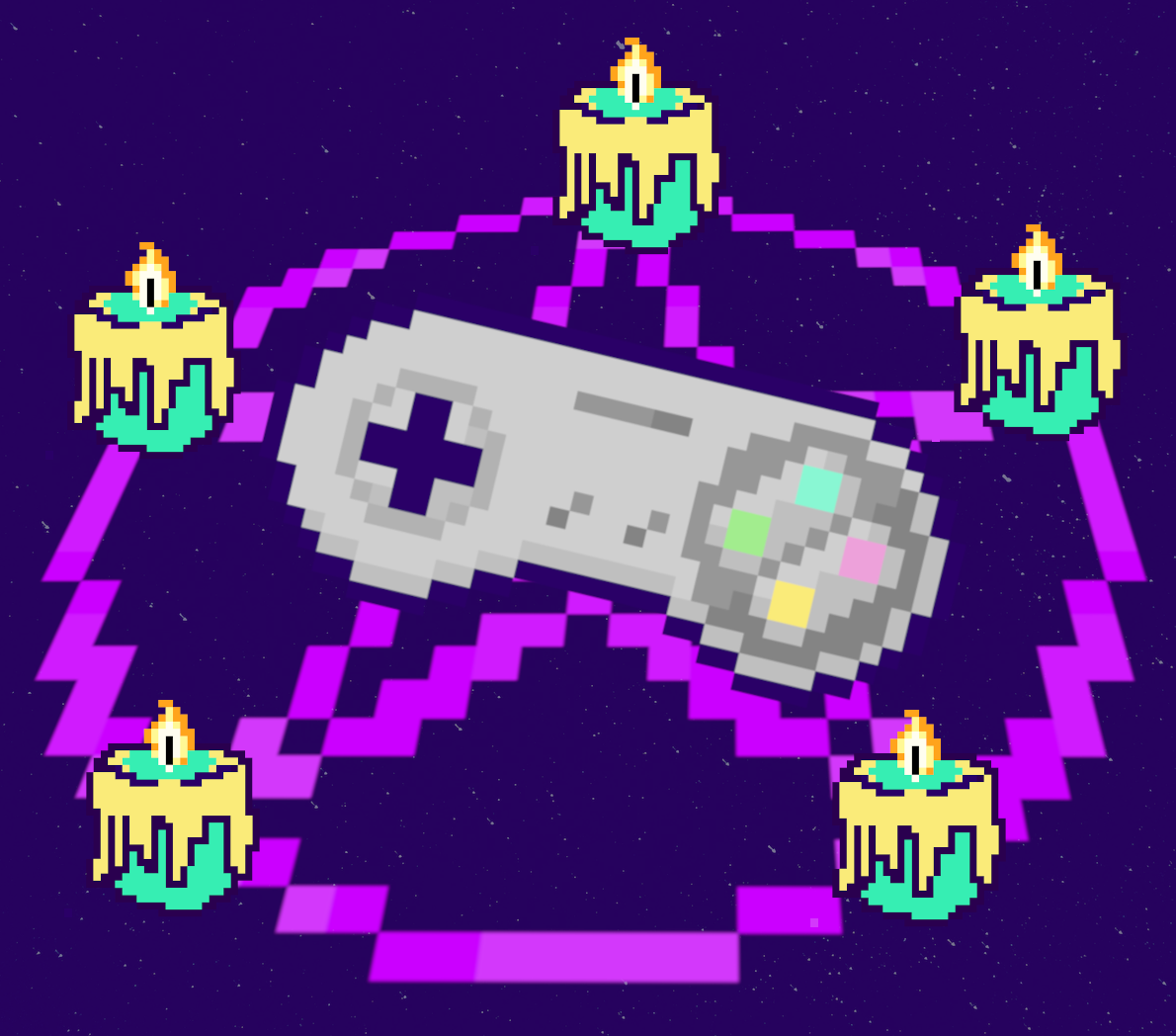



The Wheel of Fortune
a tool for self-inquiry
The Wheel of Fortune (not to be mistaken with the tarot card) is a tool for self-inquiry that you, dear reader, can engage in a daily, weekly or any frequency that suits you best. Beware, the game can be played individually or in small groups.
The main components of the game are a virtual spinning wheel, accessible via this link here https://issue.xpub.nl/20/wheel, a deck of 20 photo slides, a notebook, and a pen(cil) to store the potential insights you might find for yourself.
To start the exercise, you need to visit the website on their devices and spin the virtual wheel. The Wheel of Fortune spins for quite some time, and then it gives you a random question. Take these questions as an invitation to an explorative conversation with yourself. The list of 404 questions is carefully collected, modified (where needed) and presented to you through a random web generator. Psychotherapists, philosophers, writers, and students from XPUB 2023 are among the authors of this long list of sentences ending with “?”.
Another collection that can help you delve deeper into your inner world is a deck of photo slides. Hopefully, these captured memories of other people, paired with a random question on the screen, would evoke new emotions or prompt you to imagine possible futures.
The use of collective resources in this piece highlights the power of collaboration in creating works that encourage people to engage in self-reflection and introspection, making it a valuable addition to any art publication that explores the human experience.
The use of collective resources in this piece highlights the power of collaboration in creating works that encourage people to engage in self-reflection and introspection. As such, it may contribute to any art publication exploring the human experience.
Courtesy to: Casey Horner (https://unsplash.com/@mischievous_penguins)
Reference list: “The Myth of Normal. Trauma, Illness, & Healing in a Toxic Culture’, by Dr Gabor Maté Nadia Piet and Sandra Reeb-Gruber, https://nadiapiet.com/know-thyself/ The School of Life WNRS, We’re Not Really Strangers
Excerpt from the 404 Questionnaire: What do you want? Why do you do what you do each day? What do you think you’re here for? What are you doing with this day, today? What are you searching for? What are you looking at? Have you learned something new today? This week? What filters would you apply to your mood right now if it was an analogue film frame? Is this what you really want to do or it is your way of delaying your realisation? What would your day look like if you were a pirate? If you could be any animal for a day, which one would you choose and why? If you could be any animal for a day, how would you experience the world differently? Do you speak horse language? (wild question) If you were Kim, who would that person be? (wild question) What does your body need today? What does your mind need today? What does your soul need today? If your life was a treasure hunt, what would you be searching for? What is your personality? What would a person that loves you tell you if know you’re suffering? If you were in search of a new identity, what clues would you need to find it? If you could see the world through the eyes of any animal, which one would you choose and why? If you were a pirate, what kind of treasure would you be searching for? If you were a pirate, what obstacles would you face on your journey? If you owned a boat, to which destination you would go first and why? Think of your favourite food. How does it make you feel when looking at it? And when eating it? What is one “yes” that you’ve been ignoring lately? What advice would you give to someone else who is experiencing loss? What emotions have you been experiencing lately? How has my relationship with others changed in the last 5 years? How have my thoughts and beliefs about life and death changed in the last 5 years? What positive memories can you hold on to about a person you’ve lost? What activities or hobbies bring me comfort in times of grief? How can you take care of yourself during difficult times? What were the 6 things you wanted to be when you were a kid? What is time? How can you describe it? What is beauty? How can you describe it? What is happiness? How can you describe it? What is love? How can you describe it? What is faith? How can you describe it? What is hope? How can you describe it? What is fear? How can you describe it? What is play? How can you describe it? What is a ritual? How can you describe it? What is a game? How can you describe it? How does your body feel when you are in pain? How does your body feel when you are in love? How does your body feel when you are anxious? Do you talk negatively to yourself? Are you mean to yourself? If yes, why? If not, also why? Think of all your past partners. What are some qualities and traits they had in common? Is sex usually the best aspect of a relationship or the worst for you? What do your friends say about your partners? Did you ever have any kind of unwanted touch from a friend, a partner or a family member? Did you ever have any kind of unwanted touch from a stranger? What does sex mean for you? How does sex make you feel? What words, metaphors or images do you associate with sex? What is your attitude towards your body? Do you have any tendencies for self-sabotage, procrastination or self-doubt? Have you tried to get advice, help or guidance from professionals? Do you sometimes feel like a victim? How much sex is normal for you? Were your first sexual experiences positive or negative? How did you learn about sexuality? What are your values around sexuality? What losses have you experienced in your life, and how have you coped with them in the past? What self-care practices can you incorporate into your daily routine to help you cope with grief? What self-care practices can you incorporate into your daily routine to help you cope with anxiety? What new perspectives have you gained about life as a result of loss in the past? What triggers your feelings of grief, and how can you manage them when they arise? How has your sense of identity been affected by a loss? How can you stay connected to someone you lost even though they are no longer physically present? What role does forgiveness play in your healing process after experiencing loss? What can you do to take care of your physical health during times of grieving? How can you create a support network that will help you through difficult times? What have your friends taught you about friendship? What have your friends taught you about life? What have your friends taught you about love? What have your parents taught you about friendship? What ideas have changed your life? What subconscious behaviours are keeping you from the life you want? In which direction has your life expanded in the last five years? Are you afraid of being who you truly are? Have you adapted to a certain way of thinking? Do you suppress your feelings? Have your thoughts been chosen for you? Who do you trust? Why? Have you forced yourself to forget something painful? What is art for?

i deleted it woops. i want to write a paragraph about my mindfulness game here.
Papa Louie’s Ghosteria
Papa Louie’s Ghosteria is a comic-like fan fiction written by Ada, Irmak and Boyana.
Following the discussions we had about the texts ‘Notes on Deconstructing The Popular’ by Stuart Hall and ‘Game Modding: Cross-Over Mutation and Unwelcome Gifts’ from The Player’s Power to Change the Game by Anne-Marie Schleiner, we split into groups and started dissecting the ideology behind games some of us have played as children. To do that, we utilised several prompts to help us examine the ideology that two popular video games enforce through their narrative and gameplay. The list of questions we needed to answer while playing the game includes: What are the win conditions? If the game is quest based, what types of quests are you asked to complete? What is the gameplay? What is the narrative? How much space is there for alternative ways of playing this game? What is missing? What type of relationships are you allowed to form? What is the role of non-player characters? What are the requirements for surviving the game? Which behaviours are rewarded? What real-world values are reproduced in the game you are playing? How are you situated in the hierarchy of the game? What change in status is promised? What are you being trained for? What fantasies are lived out or explored?
Our team, Irmak, Ada and Boyana, worked on the famous Papa Louie: When Pizzas Attack. Soon after we started investigating the game, its elements and modifications, we discovered that other people already have done numerous fan fiction about it. We were bewitched by this the multitude of stories fans have written and the really good memes they have created about Papa and his businesses. Yes, plural. Freezeria. Sushiria. Donuteria. Burgeria. PanCakeria. CupCakeria. Taco Mia. You name it.
After spending some time analysing the ideology behind the game, we discovered a few elements that reinforce the capitalist narrative, such as the need to fight to survive and collect coins to purchase weapons. In response, we decided to create a new version of the game with a storyline that focuses on healing and coping with grief and loss, rather than violence. Also, to link the new storyline to SI20’s topic we felt like adding somehow ritualistic elements as actions during the gameplay.
What we decided to change was the topic, purpose and outcome of the game. Papa no longer fights to save his customers, but he deals with his own loss and grief over what happened. Our version is promoting rest and rituals for healing instead of revenge-seeking, violence and toxic pizzeria culture.
We started by putting some keywords and suggestions on a blackboard about “How To Cope With Grief” and “How to Use Rituals and Ceremonies to Overcome Grief” to define what Papa Louie lost and what rituals could help him heal.
We also liked the idea of making a comic-like storyboard that visualises the new narrative for Papa Louie’s Ghosteria. To create a few scenes depicting some of the 5 levels we outlined earlier, we used an app called Papa Louie Pals. The images turned out pretty nice! Playing around with the app was fun mainly because it allowed us to materialise our idea in just a couple of hours.
The gameplay revolves around things Papa lost and the needs he needs to fulfil. Different types of losses are organised into five levels of the game: 1. loss of safety (innocence, physical safety) 2. loss of community (clients, belonging) 3. loss of future (hope, dreams) 4. loss of identity (dignity, making things himself) 5. loss of labour (money, time, effort, pizza)
To cope with grief, Papa Louie performs various rituals to unlock a new stage in his grieving process and heal from that loss. Rituals are the actions players need to execute at each level.
And so our story goes like this: The Onion ring mafia kidnapped Papà Louie’s clients, and he lost his Pizzeria. However, along with this external change, he lost his identity as a pizza owner/maker. He is full of grief and seeks ways to cope with grief and ease himself. He tries different rituals throughout this process, builds his new identity and overcomes his troubles.

Self-published by Experimental Publishing, Willem de Kooning Academie, Wijnhaven 61, Rotterdam
Licencing Information
Copyright © 2023 TBC
XPUB is the Master of Arts in Fine Art and Design: Experimental Publishing of the Piet Zwart Institute. XPUB focuses on the acts of making things public and creating publics in the age of post-digital networks. Find out more at xpub.nl
#CONSOLE
####xpub special issue xx
Console is an oracle; an emotional first aid kit that helps you help yourself. Console invites you to open the box and discover ways of healing; Console provides shelter for your dreams, memories and worries. Face the past and encounter your fortune. Console gives you a new vantage point; a set of rituals and practices that help you cope and care; Console asks everyday questions that give magical answers. Are you ready to play?
##<3 this publication made possible thanks to
Lídia Pereira Artemis Gryllaki Manetta Berends Joseph Knierzinger Steve Rushton Leslie Robbins Michael Murtaugh Sébastien Tien and Page Not Found Anna Szaflarski Shana Moulton Bérénice Serra The Sun is its father The moon its mother The wind hath carried it in its belly The earth is its nurse
#Table of contents
The Wheel of Fortune - Manual
Manual
Console: “Welcome, my dear! This exercise is all about healing, about reconnecting with what is essential and authentic within yourself. By understanding the true nature of our suffering, we can evoke compassion for ourselves as we move through uncomfortable feelings on the path to healing and peace.
Prerequisites: Before you begin, there are a few things you will need. Firstly, you must have a strong intention to commit to this exercise for some time. Secondly, find a quiet room free of distractions, and finally, get a notebook and pen. Handwriting will engage your mind more actively and profoundly, help you connect with yourself, and enable the tracing of your progress over time.
I will be guiding you through a series of carefully selected questions written by different authors, some are well-known, and others will remain unknown. To begin the exercise, spin the Wheel of Fortune located at https://issue.xpub.nl/20/wheel. After a few seconds, a question will appear on the screen. Then, take a photo slide from the deck and try to think of an answer to that question by looking at it and the tiny film simultaneously.
These photo slides are there to help you dive deeper into your inner world. Use them to explore moments in your life that you may not have fully processed or understood. As you reflect on these images and answer the questions, you may gain new insights and perspectives about yourself and your life.
Enjoy the journey! Console”
Some Gossip on gossip
Tetris Fantasies
Death, Geometry and the Structure of the Individual
Tetris is a game where a single player is encouraged to organise the chaos given to them from above, a limited space for play of ten by twenty units leads to a limited ability to approach the perfection implied by the simple shapes that are encountered in the world (always a collection of four squares, in their seven permutations). The harnesses of time and gravity make perfection impossible in this world; instead the player can only attempt, approach, increase their efficiency. A life’s function approaching the limit, there is no way to win, only to get higher and higher scores, to live as long as possible through increased throughput. Death is inevitable in Tetris, and each passing block seems to come faster than the last. Why does it feel like everything just keeps getting harder?
There are many squares to be organised in tetris, an infinite number apparently, but there is only one player organising them. Other people can only be seen by this individual in faint ghosts; their high scores that are there only to be beaten. And the current player can only hope to reach those people through leaving their own mark on the high score table. Employee-of-the-month, world’s-best-mom. But maybe there is an alternative, a world where there is more to each falling tetromino than simply an obstacle to be overcome, a problem to be solved. Maybe there is a story behind the fatal pixels, a bigger space than the 10 x 20 grid on the screen. Maybe there are humans out there with more to them than what they produce.
This fanfic takes the form of a series of hand-drawn illustrations depicting fantastical tetris pieces, each of which is accompanied by a fragment of a story. The cards can be read and arranged in any order, intentionally removing the linear and framed limits of the original tetris, although the illustration and text on any one card have a relationship to eachother of some sort.



Fruitual
text adventre game
Creating a text adventure game is no easy feat, I would say. It takes a lot of time, creativity, and trial and error. But the key to a great game is putting yourself in the player’s shoes and making sure there are plenty of fun twists and turns along the way.
For my game, I decided to keep it simple and tell a linear story. I used a web engine called Twine (twinery.org, an open-source tool for telling interactive, nonlinear stories) to help generate the game’s storyline and adapted the script from a Bulgarian fairytale (“The Most Precious Fruit”). But things didn’t always go smoothly. When the python script started generating the wrong messages for players who strayed from the script, I tried to find solutions on StackOverflow, but it was all too complicated for me.
In the end, the game took me around 6-7 hours to make, including writing, coding, mapping, editing, and lots of trial-and-error. It was a great learning experience, but it also taught me that game development can be tough if you don’t have much coding experience. I had to approach it more from a writer’s perspective and figure out the coding later.
I learned that game development is an iterative process, and sometimes your initial ideas might be more complex than what you end up with. It’s all part of the journey. Before starting this project, I had no idea text adventure games even existed, but now I’m happy to say I’ve made one in just a few weeks. Lastly, I would like to express my appreciation for the guidance and support provided by our prototyping tutors in the development of these projects.
(“The Most Precious Fruit”, https://fairytalez.com/the-most-precious-fruit/)

Holographic Oracle Deck
‘Crystals & Energy’ is a holographic oracle deck exploring a range of energy sources through the magical (mystical) nature of crystals as energy-storing matter
‘Crystals & Energy’ is a holographic oracle deck exploring a range of energy sources through the magical (mystical) nature of crystals and minerals as energy-storing matter.
Lidia and Artemis, Special Issue 20 guest editors, asked us to modify an oracle deck of our choice. We, Cara and Boyana, prototyped a holographic oracle deck where a type of crystal is coupled with a type of energy resource in a single card in an attempt to talk about the global energy crisis we are facing today. It (the deck) provides an educational experience through the use of a DIY prism and complimentary audiovisual materials, together serving as an immersive learning environment.
After a quick research, we decided to couple Aquamarine and Liquified Natural Gas (LNG) which we thought would fit nicely as a first example of such a card.
Why Aquamarine? It looks like water that has been crystallised; stored energy; compression; solidified; being put under pressure or exposed to a specific temperature so that it changes its state (from liquid to solid). Why LNG? It is natural gas that has been liquified; compressed; liquified; being put under pressure or exposed to a specific temperature so it changes its state (from gas to liquid); stores energy that can be channelled later.
Then, we wrote a short poem weaving the two elements into the everyday narrative. Later this poem served as a script to create a voice narration (one-minute-long audio piece) that went into the video creation process. Although the final text is a slight deviation from our initial idea, we felt inspired by the conversation we had with Steve earlier that day. He talked about his childhood memories of collecting rocks in notebooks, perhaps similar to what geologists do when they document their discoveries. He also mentioned a few things about caverns and a mine (later turned into a museum) located near the city where he used to live.
To visualise the card, we used a hologram video maker app. The process was easy and fun. All we had to do was simply find a hi-res image of the Aquamarine crystal on a black surface and upload it into the app. Lastly, we made a model of a pyramid prism so that we can demonstrate the prototype fully. To get the full holographic effect, we had to put it on top of a phone screen and play the video, which we uploaded on YouTube and embedded the link onto a website.
We saw in this prototype a potential to provide new knowledge, create an engaging and fun learning experience around energy sources, and add a sense of magic to everyday life. By combining these different elements, we were hoping to create an unusual experience that can help people better understand and appreciate the importance of energy sources and sustainability. It will be interesting to see how our prototype evolves and what kind of impact it could have on people’s perceptions of these topics.



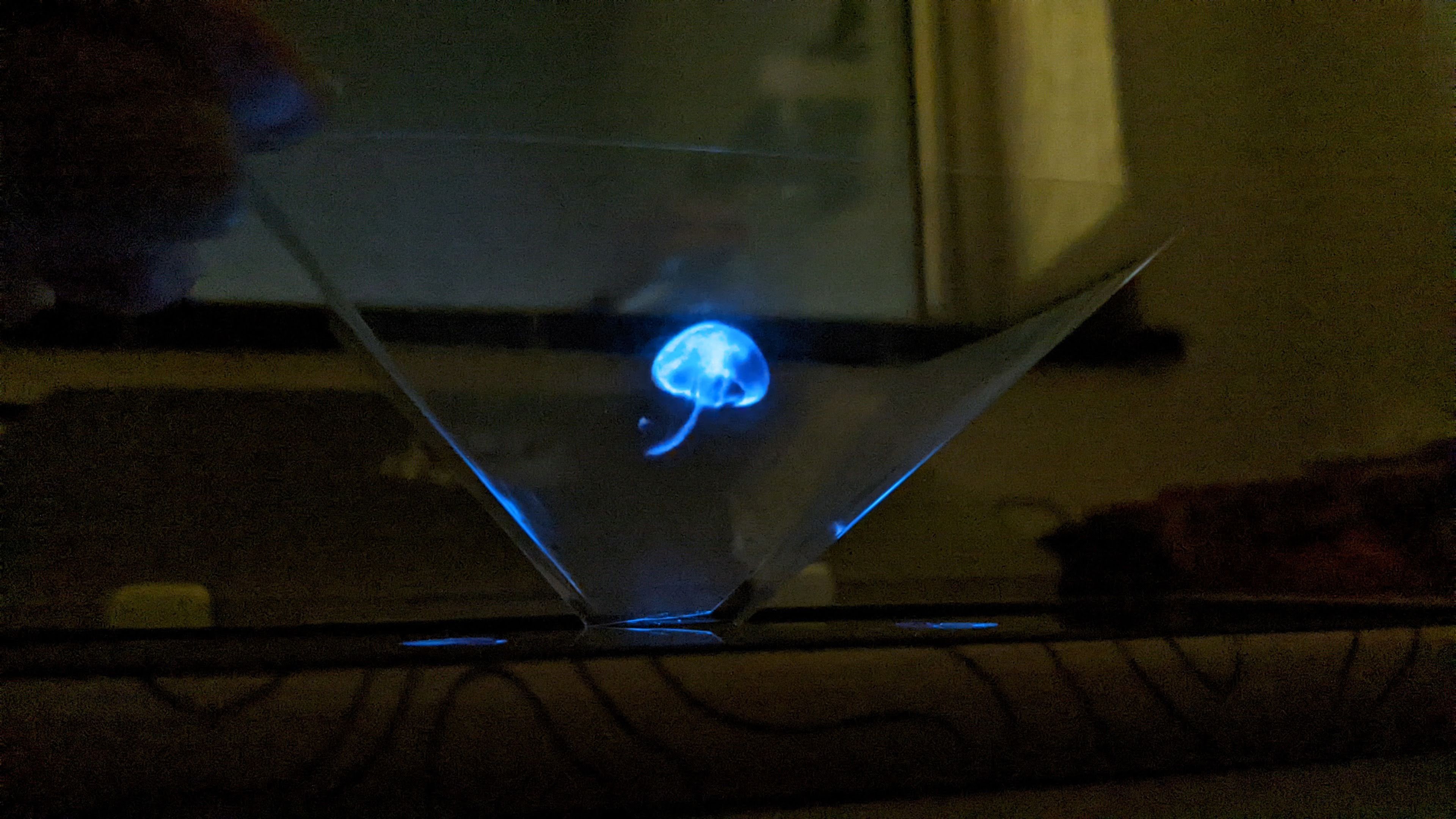


Sometimes the world as it is and the world as it could be are devastatingly close to each other.
Is there any point in imagining something that is so similar to the nightmare we already live in? The future is a dream but it’s just that dream where you remember putting your keys somewhere, but where? You’re wandering around looking for them for what feels like hours. Whether it was real or not isn’t important, you were still there. Why do we stay here? What’s even here for us? If you don’t get them first, they’ll get you. Then you wake up and you still can’t find the fucking keys. But sometimes it’s sunny and you’re standing there and there’s something cinematic about the whole thing, is it worth it just to be there for that maybe. There’s really no difference between a dream about falling and a dream about flying.
Long Time
Six Sigma Fortune Telling
While the future cannot be predicted with certainty, present understanding in various scientific fields allows for the prediction of some far-future events, if only in the broadest outline. These fields include astrophysics, particle physics, evolutionary biology, plate tectonics and sociology. The far future begins after the current millennium comes to an end, starting with the 4th millennium in 3001 CE, and continues until the furthest reaches of future time. This timeline includes alternative future events that address unresolved scientific questions, and is in fact not six sigma accurate at all.
This timeline (based on Wikipedia’s Timeline of the Far Future) claims to make accurate predictions far into the future at timescales that are difficult to comprehend; beyond our lifetimes, beyond the death of the earth, beyond the death of atoms. The scientific method claims to have an intense relationship to the material world which is “orders of magnitude” more accurate than other ways of interacting with and understanding where we are. The scientist often pits themself as “against” the fortune-teller, the tarot reader, or the mystic, and yet they make even bigger claims about our collective future. Is there any way to disprove the scientist’s method in their own mind?
This web-based game attempts to highlight the uselessness of this approach. Sometimes a human can have no effect on the extreme truth that science offers, or to put it more usefully, sometimes science has nothing to offer humans. This timeline uses scientific and objective distance to avoid the most inevitable and obvious event in the future: your own death. Death is non-relational: no one can die in one’s place, and we cannot understand our own death through the death of others (Heidegger, Being and Time, 1962). Just like the scientist, the philosopher doesn’t have much to offer solace here. So where do we go to talk about death?


